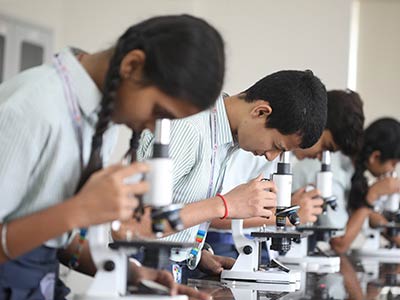Introduction
The solar system is a fascinating and complex structure that has intrigued humanity for centuries. For parents and teachers, understanding the solar system is essential for nurturing children’s curiosity about space and science. This guide will explore the names of planets in the solar system, their order from the Sun, and provide insights into each planet’s characteristics. By familiarising ourselves with these celestial bodies, we can inspire the next generation to learn more about our universe.
Define Solar System
The solar system consists of the Sun and all celestial bodies that are gravitationally bound to it. This includes eight major planets, their moons, dwarf planets, asteroids, comets, and other small celestial objects. The solar system formed approximately 4.6 billion years ago from a giant molecular cloud. The Sun contains over 99% of the total mass of the solar system, making it the central hub around which all other objects orbit.
What is a planet?
A planet is defined as a celestial body that orbits a star (in this case, the Sun), has sufficient mass for its self-gravity to overcome rigid body forces so that it assumes a nearly round shape, and has cleared its orbital path of other debris. The International Astronomical Union (IAU) classifies our solar system’s planets into two categories: terrestrial (rocky) planets and gas giants.
Planets in Order From the Sun
The planet names in our solar system are listed in order of their distance from the Sun:
- Mercury
- Venus
- Earth
- Mars
- Jupiter
- Saturn
- Uranus
- Neptune
Understanding this order helps children grasp not only the arrangement of planets but also their relative distances from our central star.
Mercury
Mercury is the closest planet to the Sun and is also the smallest planet in our solar system. It has a diameter of about 3,032 miles (4,880 kilometers). Mercury’s surface is heavily cratered, resembling that of Earth’s Moon, due to its lack of atmosphere, which cannot protect it from meteoroid impacts. Temperatures on Mercury can vary drastically, reaching up to 800°F (427°C) during the day and dropping to -330°F (-201°C) at night. Despite being closest to the Sun, Mercury does not have any moons.
Venus
Venus is the second planet from the Sun and is often referred to as Earth’s “sister planet” due to its similar size and composition. However, its environment is vastly different; Venus has a thick atmosphere composed mainly of carbon dioxide with clouds of sulphuric acid, making it extremely hot—averaging around 900°F (475°C). This harsh climate makes Venus one of the least hospitable places in our solar system. Interestingly, Venus rotates on its axis in the opposite direction to most planets, causing its sunrises to occur in the west.
Earth
Earth is the third planet from the Sun and is unique for its ability to support life. It has a diverse climate and geography that includes oceans, mountains, forests, and deserts. Earth’s atmosphere is composed primarily of nitrogen and oxygen, which are essential for life as we know it. It has one natural satellite—our Moon—which plays a crucial role in stabilising Earth’s axial tilt and influencing tides.
Mars
Mars, known as the “Red Planet,” is the fourth planet from the Sun and is characterised by its reddish appearance due to iron oxide (rust) on its surface. Mars has two small moons—Phobos and Deimos—and features such as Olympus Mons, which is the tallest volcano in our solar system, and Valles Marineris, one of the largest canyons. Mars has been a focal point for exploration due to evidence suggesting that liquid water once flowed on its surface.
Jupiter
Jupiter is the fifth planet from the Sun and holds the title of being the largest planet in our solar system. With a diameter of about 86,881 miles (139,822 kilometres), Jupiter is primarily composed of hydrogen and helium. Its most famous feature is the Great Red Spot—a massive storm larger than Earth that has been raging for hundreds of years. Jupiter has a strong magnetic field and at least 79 known moons, including Ganymede, which is larger than Mercury.
Saturn
Saturn is known for its stunning rings made primarily of ice particles with some rock debris and dust. It is the sixth planet from the Sun and is second only to Jupiter in size among all planets name in our solar system. Saturn’s atmosphere consists mainly of hydrogen and helium as well. It has over 80 moons, with Titan being its largest moon—larger than some planets! Saturn’s rings are one of its most distinctive features and are composed of countless small particles that range in size.
Uranus
Uranus is unique among planets because it rotates on its side; this extreme tilt gives it an unusual axial tilt of about 98 degrees relative to its orbit around the Sun. It is classified as an ice giant due to its icy composition, which includes water, ammonia, and methane—giving it a blue color. Uranus is located seventh from the Sun and has 27 known moons along with a faint ring system.
Neptune
Neptune is the eighth planet from the Sun and is known for its deep blue colour caused by methane in its atmosphere. It was discovered through mathematical predictions rather than direct observation due to its distance from Earth. Neptune has strong winds—some of the fastest recorded in our solar system—and features large storms similar to Jupiter’s Great Red Spot. Neptune has 14 known moons, with Triton being its largest.
How to Remember the Planets in Order
To help children remember the planets name in order from closest to farthest from the Sun, various mnemonic devices can be used:
- My Very Educated Mother Just Served Us Noodles: This phrase corresponds to Mercury, Venus, Earth, Mars, Jupiter, Saturn, Uranus, and Neptune.
- My Very Eager Mother Just Served Us Nachos: Another variation using “Nachos” instead of “Noodles.”
Using these fun phrases can make learning about solar system name more engaging for children.
Conclusion
Understanding solar system planet names and their order provides foundational knowledge that enriches children’s education about space science. By introducing them to all planet’s names through engaging activities like mnemonics or visual aids such as models or diagrams, parents and teachers can foster curiosity about astronomy.
As children learn about these celestial bodies—Mercury through Neptune—they develop an appreciation for our place in the universe while grasping essential scientific concepts related to planetary science.
For those interested in enhancing their child’s educational journey further or seeking quality education options such as schools in Pune India, or information on school admission, exploring local resources can provide additional support for nurturing young minds eager to learn more about science and beyond.
By instilling an understanding of our solar system early on, we prepare children not just for academic success but also for a lifetime of exploration and discovery about their world—and beyond!






























